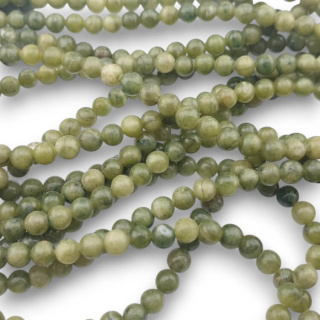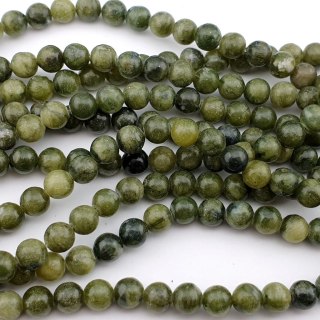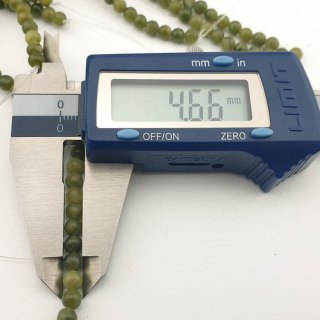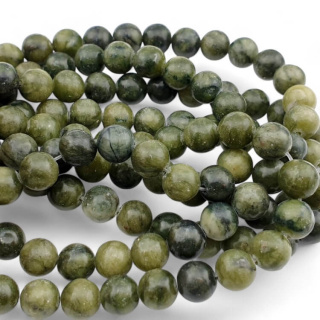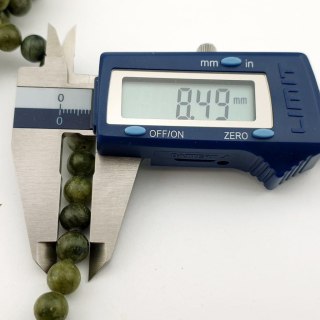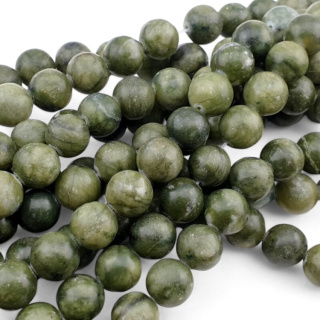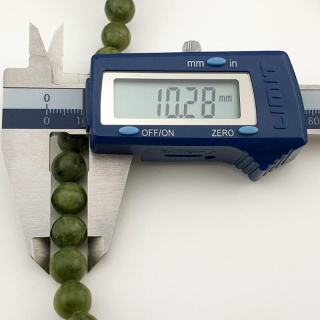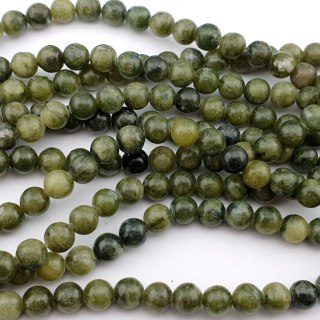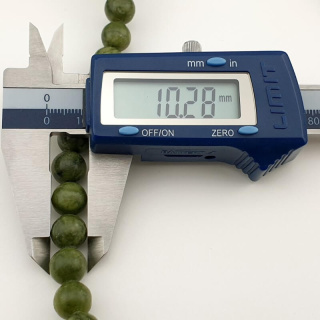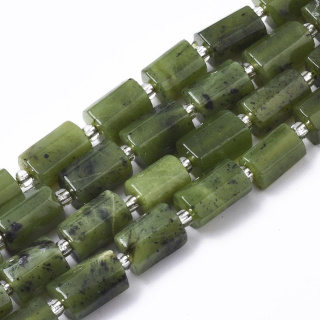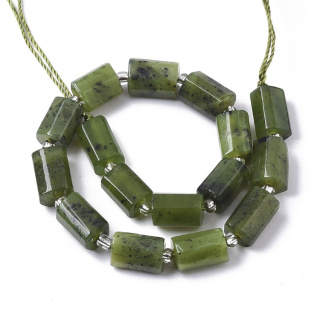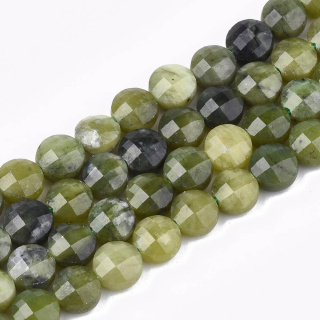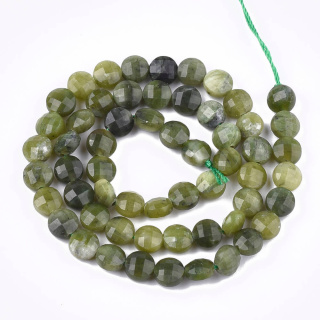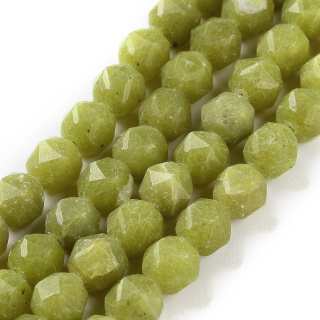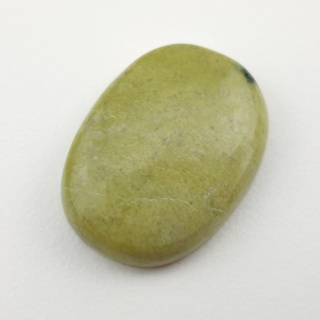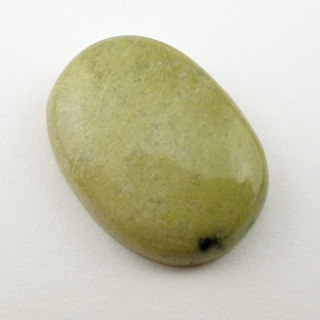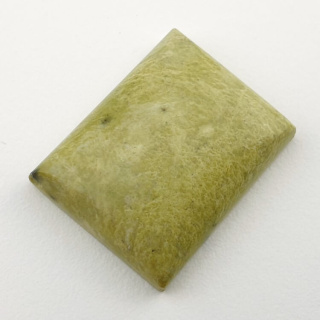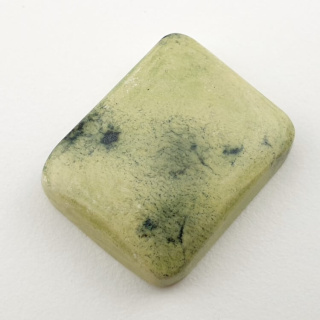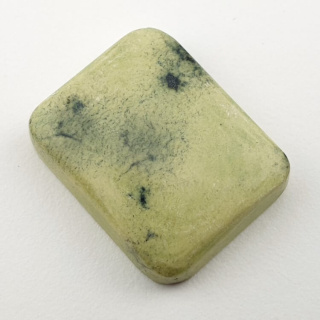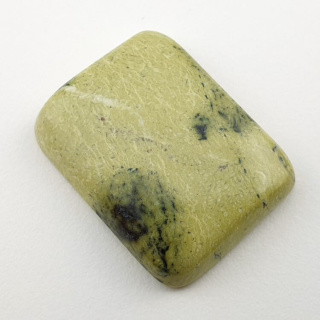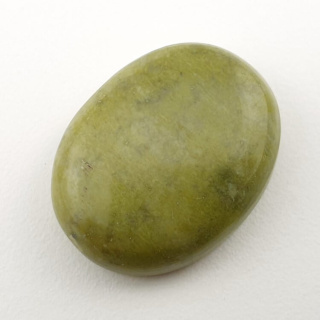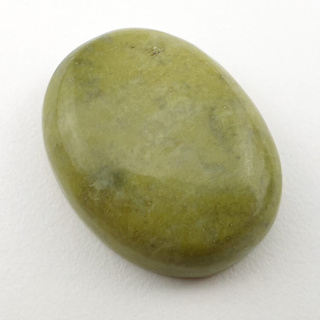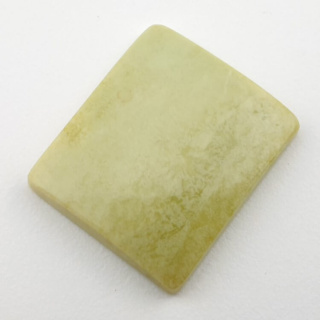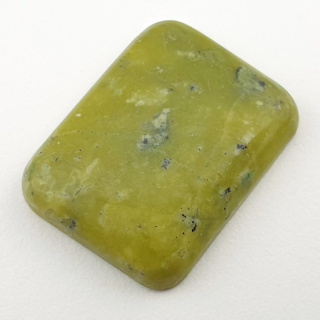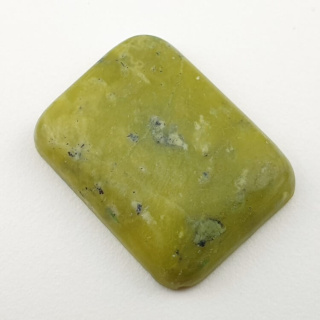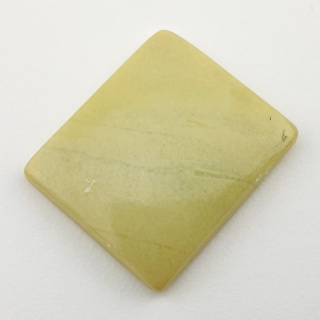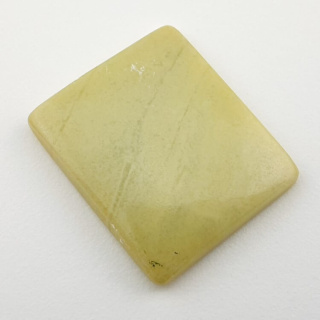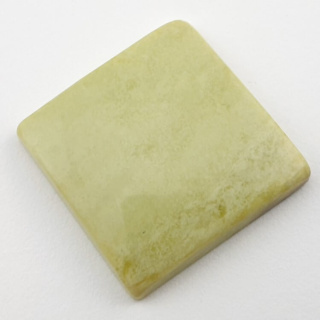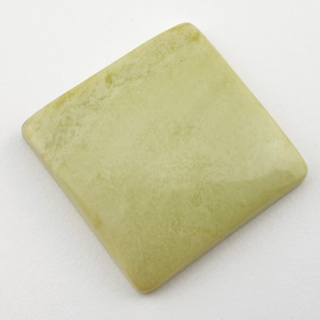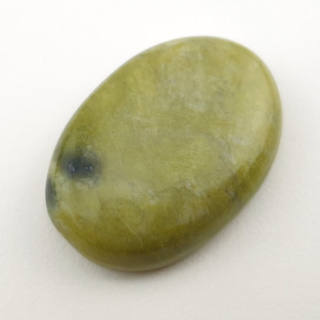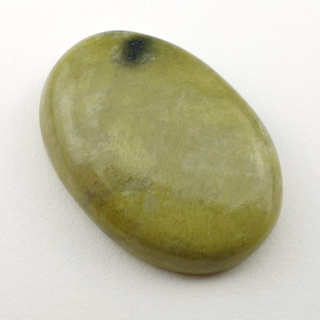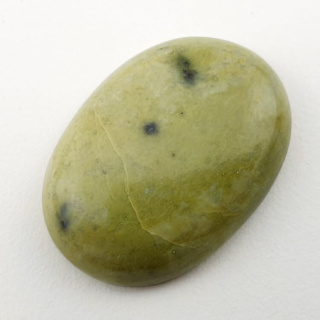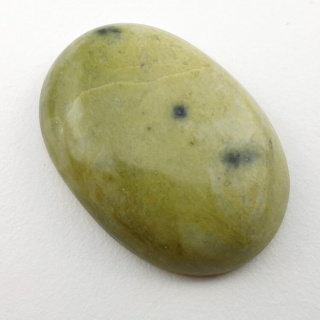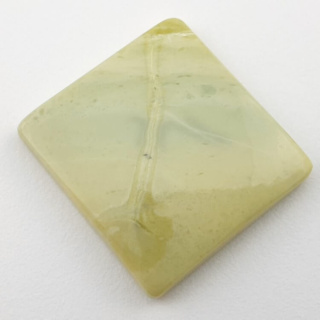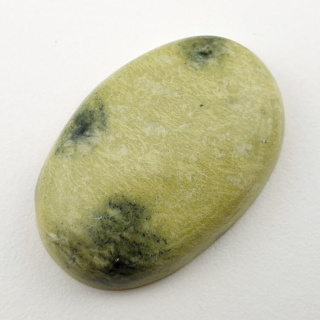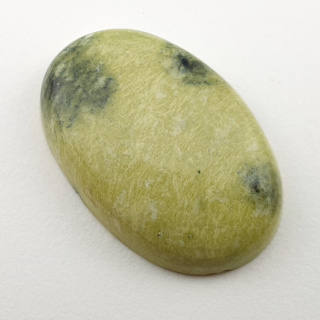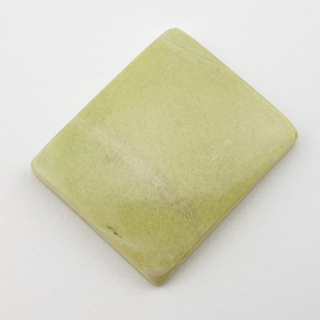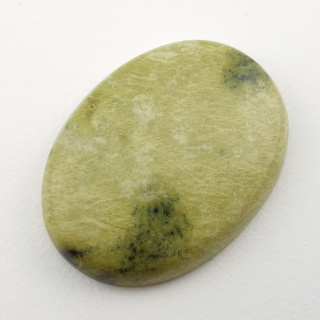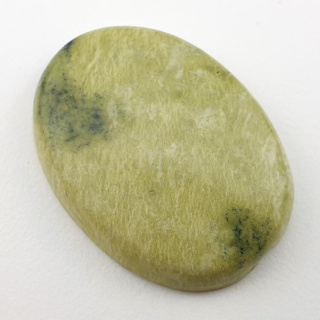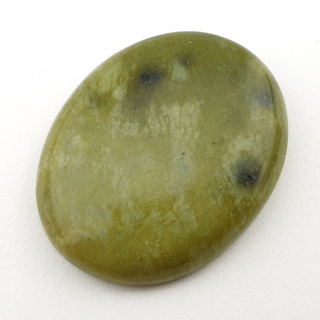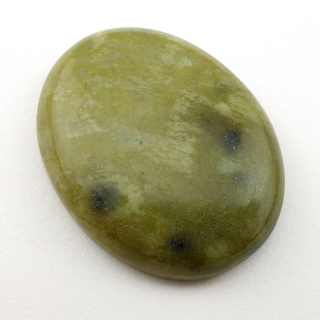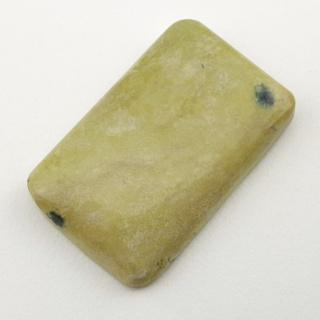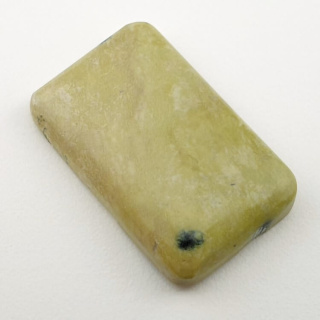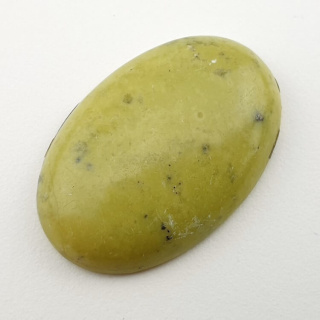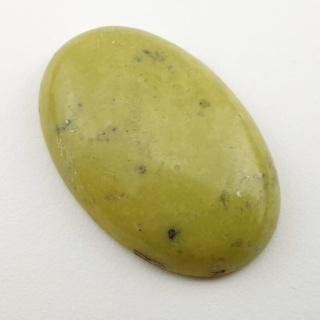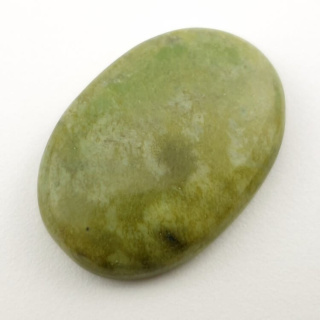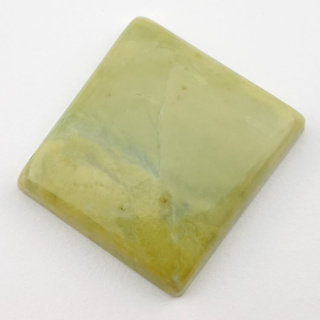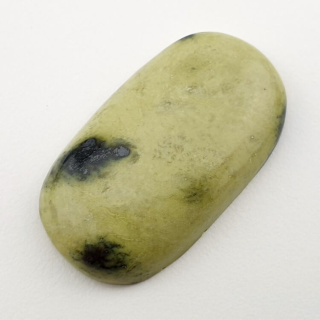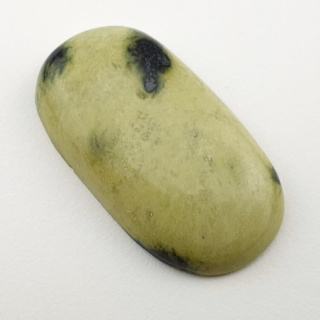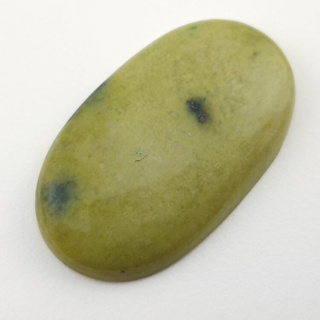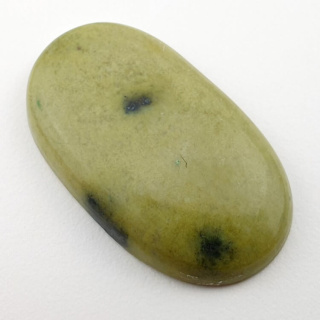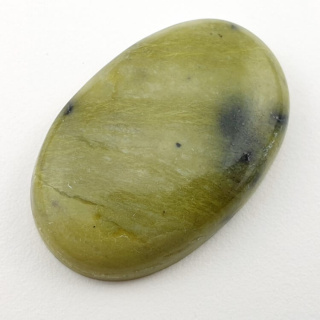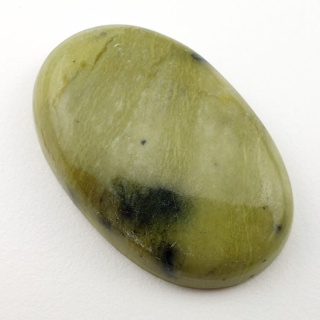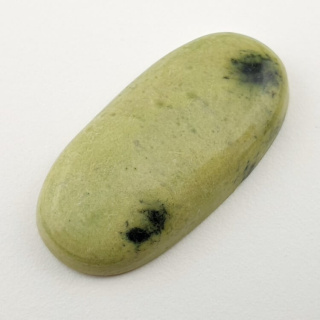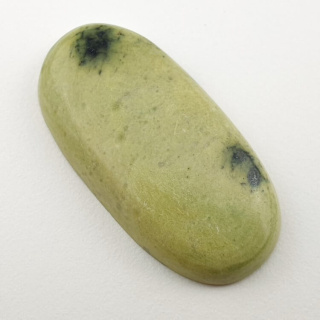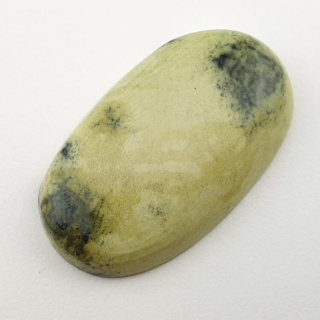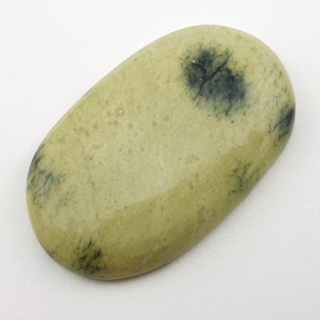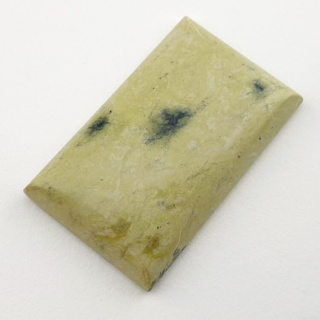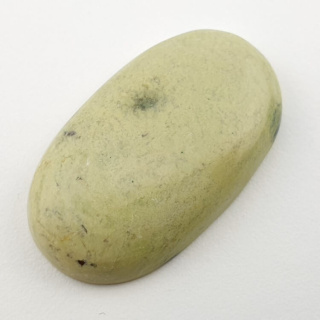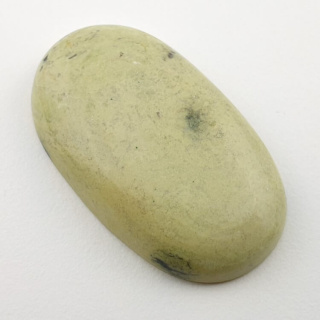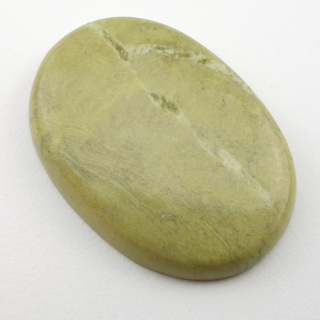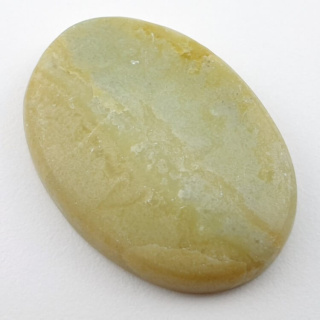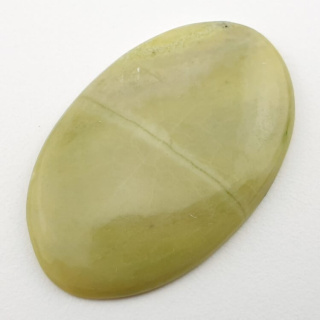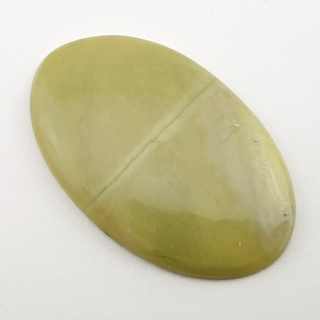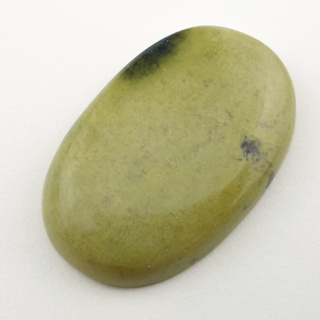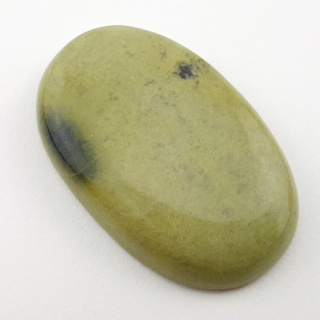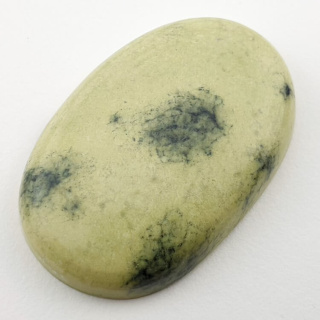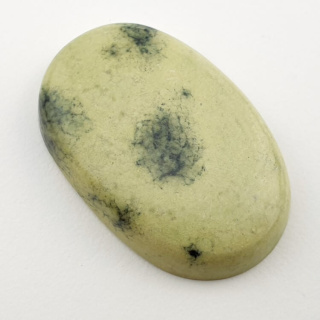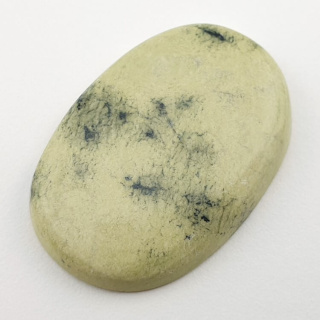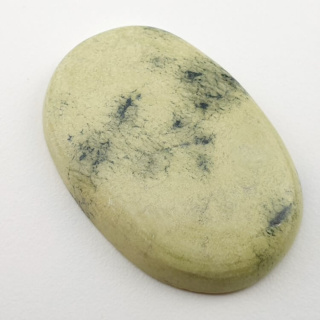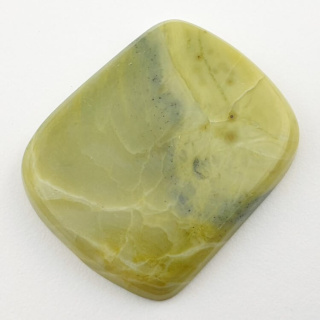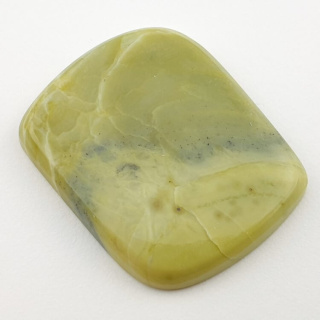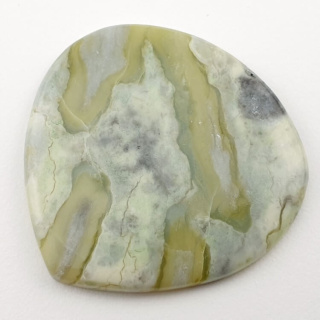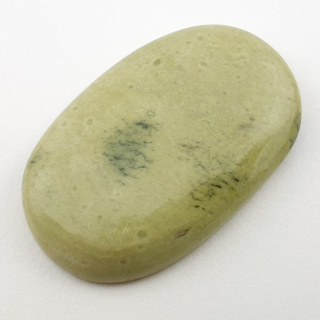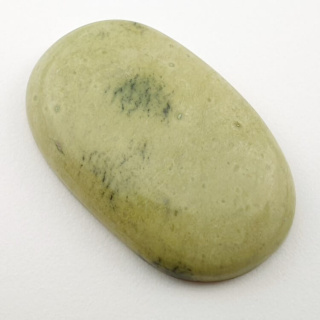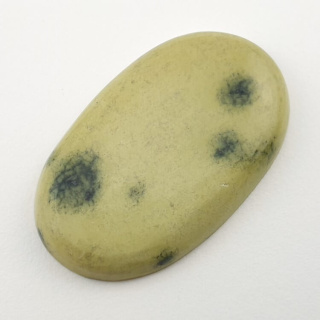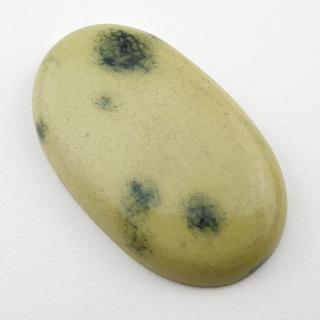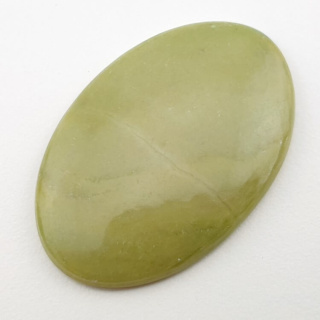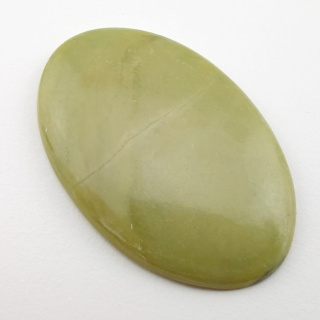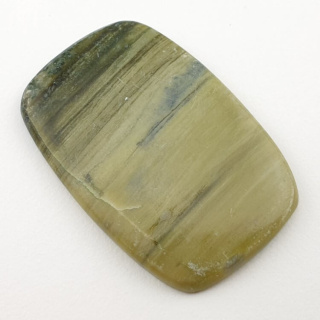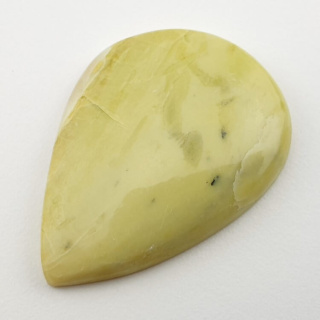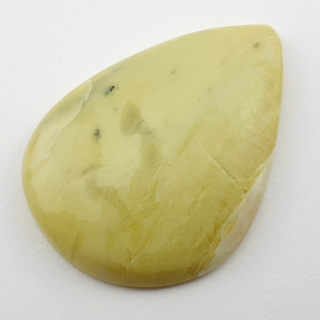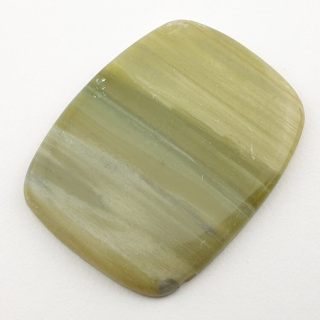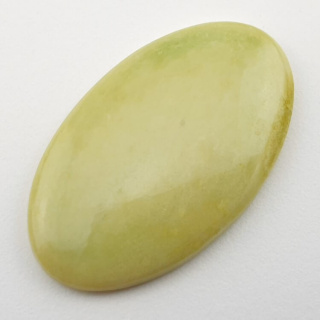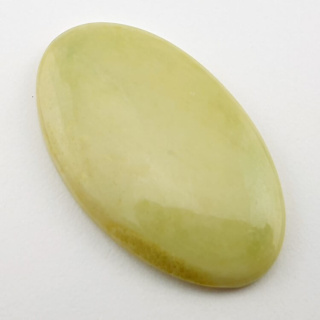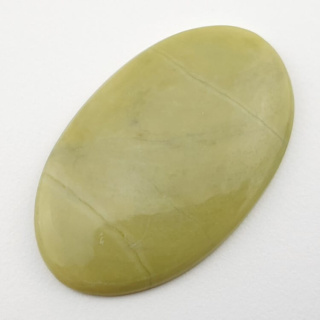Green serpentine stone - gemstones in the Fusima store
Number of products : 115What is serpentine?
Serpentine rock is formed by the metamorphism of rocks in areas of high pressure and low temperatures, often in the context of tectonic plate subduction, where one oceanic plate slides beneath another. It is a process whereby the original rock, often basalt or peridotite, is transformed into serpentine under the influence of high pressure and water. Serpentine has many industrial uses, including as a building material, for example in the manufacture of ceramic tiles and wall coverings. It is also used in jewelry as a decorative stone.
How is serpentine formed?
Serpentine is formed as a result of a metamorphic process that occurs within the Earth's crust under specific geological conditions. This process is usually associated with subduction, i.e., the sliding of one tectonic plate under another at plate boundaries. Here is a general overview of how serpentine is formed:
- Initial parent rock: The process begins with existing parent rock, which may be basalt or peridotite, although serpentine can also form from other silicate rocks.
- High pressure: The parent rock is subjected to very high pressure, which is characteristic of subduction zones where one oceanic plate sinks beneath another. This pressure can reach several kilobars (1 kilobar is 1,000 Earth atmospheres).
- Low temperatures: Unlike other metamorphic processes, such as granulitization, serpentinite forms at relatively low temperatures, usually below 400°C.
- The action of water: Water is a key factor in the formation of serpentinite. Water acts on the parent rock, transforming it into serpentinite minerals such as chrysotile, antigorite, and lizardite.
- Chemical reactions: Water acts on the minerals contained in the parent rock and leads to chemical reactions that transform basalt or peridotite into serpentine.
Description and properties of serpentine minerals
What are the physical properties of serpentine?
Serpentine has several distinctive physical properties that distinguish it from other rocks. Here are the main physical properties of serpentine:
- Color: Serpentine stone comes in various shades of green. It can be light green, dark green, olive, yellowish green, or brownish. The final green color of the stone depends on the type of serpentine minerals in a given sample.
- Hardness: Serpentine is relatively soft compared to some other rocks. On the Mohs hardness scale, which measures the resistance of minerals to scratching, serpentine typically scores between 2.5 and 4. This means that it is relatively soft.
- Luster: The surface of serpentine often has an oily or waxy luster, which is one of the characteristic features of this rock. This luster is due to the texture and mineral composition of serpentine.
- Resistance to disintegration: Serpentine is known to disintegrate and disintegrate when exposed to atmospheric factors such as water and temperature changes. This is important when used in construction, as it can degrade over long periods of time.
- Crystal pattern: Serpentine minerals, such as chrysotile, antigorite, and lizardite, exhibit a specific crystal pattern and a fibrous or scaly structure.
The physical properties of serpentine make it useful in various fields, such as jewelry, construction, and decoration, as well as an ornamental stone.
What are the general chemical characteristics of serpentine?
Serpentine is a metamorphic rock that is composed mainly of serpentine minerals, which are often different varieties of silicates belonging to the serpentine group. The characteristic chemical properties of serpentine and its mineral composition include:
- Serpentine minerals: The main minerals that make up serpentine are various varieties of serpentine, such as chrysotile, antigorite, and lizardite. Each of these varieties of serpentine has a slightly different chemical composition, but all contain silicates, magnesium, and iron.
- Chemical composition: Serpentines are rich in magnesium (Mg) and also contain significant amounts of iron (Fe). The chemical composition of serpentine can vary depending on the specific variety and location where it occurs.
- Fibrous or scaly structure: Serpentine minerals have a scaly or fibrous structure, which means that their particles form long, thin fibers or plates. This gives serpentine its characteristic appearance.
- Chemical reactions with water: Serpentines are sensitive to water. Water can lead to chemical reactions that transform serpentine minerals, including chrysotile, into other minerals, as well as affect the decomposition and degradation of the rock.
- Low metamorphic temperature: One of the characteristic properties of serpentine is that it forms at relatively low temperatures during metamorphism, unlike other metamorphic rocks, which form at higher temperatures.
The chemical properties of serpentine influence its behavior in geological conditions, as well as its usefulness in various fields such as the construction industry, jewelry, and spirituality. It is characterized by unique chemical and structural features that attract the attention of researchers and creators.
What are the magical properties of serpentine?
Serpentine has some symbolic meaning in esotericism and small magical rituals in various traditions. It is a stone that is associated with snake symbolism, which may be related to its name “serpentine” (from the Latin word “serpens,” meaning snake), as well as its appearance, which resembles snake scales.
Here are a few examples of how serpentine can be interpreted in an esoteric context:
- Protection: In some traditions, serpentine is considered a protective stone against negative energy and influences. It can be worn as a talisman or amulet to protect against evil spirits. Transformation: Due to the metamorphic process it undergoes, serpentine is sometimes interpreted as a symbol of change and transformation. It can be used in rituals related to personal growth and transformation.
- Life energy: Green stones, including serpentine, are often associated with life energy and nature. They are sometimes used in meditation practices and chakra work.
It is important to note that the magical and esoteric properties of stones are strongly linked to an individual's beliefs and convictions, and may vary depending on culture, tradition, and personal beliefs. There is no scientific evidence for the actual magical properties of serpentine, so its significance in this field is mainly a matter of faith and spiritual belief.
What is the significance of serpentine in spirituality and esotericism, as well as in meditation practices?
Serpentine has some significance in the fields of spirituality, esotericism, and meditation practices, although it is not one of the most well-known or popular stones in these fields. Here are a few ways in which serpentine can be interpreted in these contexts:
- Change and transformation: Due to its formation process as a result of metamorphism, serpentine is sometimes seen as a symbol of change and transformation. In spiritual practices, it can be used to connect with processes of personal growth and transformation.
- Life energy: Green stones, including serpentine, are often associated with nature and life energy. In some traditions, these stones are used to work with the chakras and to increase feelings of unity with nature.
- Protection and warding off negative energies: Serpentine can be seen as a protective stone that has the ability to ward off negative energies and influences. In some esoteric practices, it is used as a talisman or amulet to protect against evil spirits.
- Meditation: In meditation practices, serpentine can help achieve states of calm and inner peace. Its earthy nature and green color can help establish greater contact with nature and the earth.
It is worth noting that the properties and effects of serpentine in spirituality and esotericism are subjective and may vary depending on the beliefs and convictions of individuals. Stones and minerals often play a role in spiritual practices as tools for increasing focus, mindfulness, and contemplation, as well as symbols of specific values and beliefs.
What are the known uses of serpentine in jewelry, and what are its unique characteristics that set it apart?
Serpentine has several well-known uses in jewelry thanks to its unique appearance and characteristics. Here are some of the uses of serpentine in jewelry and its unique characteristics that attract jewelry designers:
- Color and patterns: Serpentine comes in a variety of shades of green, ranging from light green to dark olive, giving designers a wide range of colors to work with. In addition, serpentine can exhibit interesting patterns, including scaly or wavy patterns, which add texture and depth to jewelry designs.
- Luster: Serpentine often exhibits an oily or waxy luster, which gives it an attractive appearance and makes it an appealing material for jewelry making.
- Resistance to chipping: Serpentine is relatively soft compared to some other gemstones, which means it is relatively less prone to chipping or breaking during jewelry processing. This makes it easier to work with and shape into various forms.
- Originality: Serpentine is a less common stone in jewelry compared to popular gemstones such as diamonds or sapphires. Choosing serpentine can therefore add originality and uniqueness to jewelry designs.
- Symbolism: Due to its snake-like appearance, serpentine can be used in jewelry designs associated with snake symbolism, which may have special meaning in certain cultures and traditions.
- Price: Serpentine is generally available at relatively affordable prices, making it an attractive choice for those looking for beautiful gemstones without breaking the bank.
It is worth noting that serpentine can be used in various types of jewelry, such as rings, earrings, necklaces, and bracelets, and can be combined with other precious or semi-precious stones to create beautiful and unusual jewelry designs.
Is serpentine valued in jewelry making for its properties, color, or symbolism?
Serpentine is valued in jewelry making for several reasons, including its color, unique appearance, and symbolism. Here's why serpentine is prized in jewelry making:
- Color: Serpentine comes in a variety of shades of green, giving designers a wide range of colors to work with. The green colors of serpentine can be light, dark, olive, or yellowish-green. This color makes serpentine attractive to people who appreciate green-colored stones.
- Unique appearance: Serpentine has a distinctive structure that resembles snake scales or wavy patterns. This texture gives it a unique appearance that may appeal to jewelry designers looking for original designs.
- Symbolism: Serpentine is often associated with snake symbolism due to its name and snake-like appearance. In various cultures and traditions, snakes can symbolize many things, such as wisdom, transformation, protection, and life energy. For those looking for jewelry with specific symbolism, serpentine may have special meaning.
- Price: Serpentine is available at relatively affordable prices, which means it is an accessible alternative for those who do not want to invest large sums in gemstones. This gives jewelers and customers the opportunity to create and purchase beautiful jewelry without a large financial burden.
It is worth noting that the choice of serpentine in jewelry depends on personal preference and taste. It is not a precious stone, but it has its own unique characteristics that appeal to those who appreciate its color, appearance, and symbolism.
![[{[item.product.name]}]]([{[item.product.photo.url]}] 75w)



